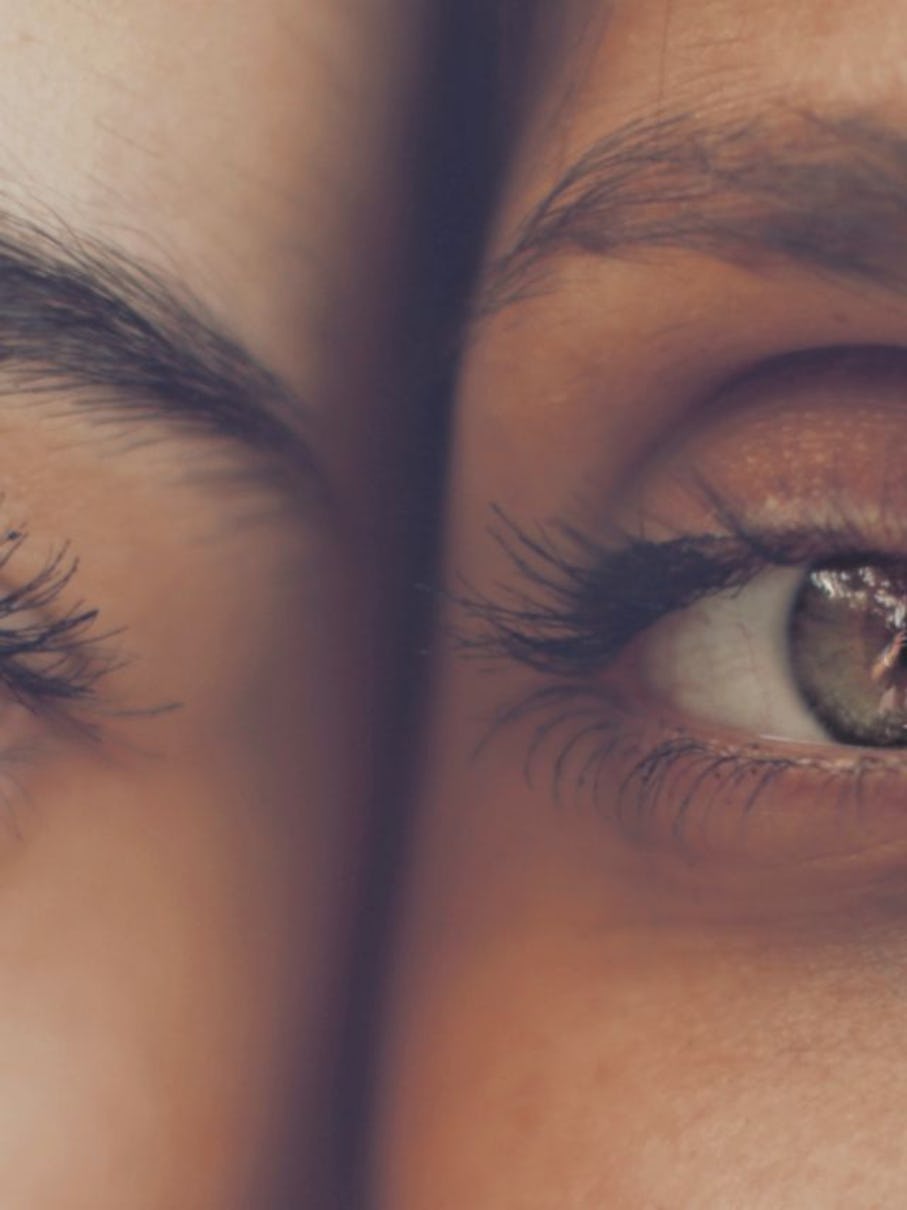
Banish Eye Bags for Good

Erase Dark Circles - Causes & Cures
Dry eyes are more common during pregnancy and breastfeeding. Doctors do not yet fully understand what causes this. They suspect that it's due to hormonal shifts, making it more difficult for your eyes to produce enough tears.
Dry eyes (also known as Dry Eye Syndrome or Dry Eye Disease) related to pregnancy tend to worsen at the end of the first trimester. The level of 'dryness' varies between women. Some women experience ebbs and flows through the day, while others experience a more constant level.

You may notice some of the following symptoms during pregnancy or breastfeeding:

Women are more likely than men to have dry eyes, mainly when hormonal changes occur, such as during pregnancy or menopause or when taking some forms of birth control.
Males have higher levels of androgens (sex hormones including testosterone). These hormones are thought to protect against dry eyes because they support tear production. Although women also have these sex hormones, their levels are lower, which might explain why they have higher rates of dry eyes than men. Women also have estradiol — which increases during pregnancy and breastfeeding. Estradiol is thought to counteract the protective effects of androgens.
People may find that skin issues such as rosacea and eczema cause dry eyes. These skin conditions may worsen during pregnancy and further compound the problem of hormone-related dry eyes.

Drinking plenty of water to prevent dehydration. Using a humidifier to prevent the air from becoming too dry.
Take a fatty acid supplement, such as fish oil or an omega-3 supplement - or try our Ultimate Eye Vitamins with Omega 3 & 6 oils.
Wearing sunglasses outside to minimise sun damage to the eyes trying warm compresses or eyelid massage.
Use preservative-free, lubricating drops & sprays to strengthen your tear film and top-up your tears.
Avoid fans or heaters near or directly on your face, which can worsen your dry eyes.
Avoid using (potential) irritants around your eyes - like lotions and creams. If you use several products - eliminate them one at a time to see which one triggers your dry eye symptoms.
Steroids can help treat some types of eye inflammation. An ophthalmologist may recommend steroid creams (on the eyelids or a set of steroid eye drops. They may also fit removable tear plugs into your tear ducts - which help the tears stay in your eyes for longer.
Pregnancy can lead to temporary changes in vision due to hormonal fluctuations, fluid retention, and increased blood circulation. These factors may cause changes in the shape and thickness of the cornea, resulting in blurry or distorted vision. They can also affect the eye's focusing ability.
Yes, mild vision changes are relatively common during pregnancy and are usually temporary. However, any significant or sudden changes in vision should be discussed with an eye specialist, as they could signal more serious underlying conditions like preeclampsia or gestational diabetes.
Pregnancy impacts eye health in several ways:
Yes, pregnancy can cause dry eyes due to hormonal changes that affect tear production. Pregnant women may also experience other eye issues, such as:
For most women, vision changes experienced during pregnancy are temporary and will return to normal after giving birth. However, it's essential to consult with an eye specialist if vision issues persist or worsen after delive
To maintain good eye health during pregnancy, consider the following tips:
It is generally safe to wear contact lenses during pregnancy. However, some women may experience increased discomfort or dryness due to changes in tear production. Using preservative eye drops and sprays will help. If you have concerns about wearing contact lenses while pregnant, consult your eye specialist for advice on alternative options or ways to alleviate discomfort.
Routine eye exams during pregnancy are generally safe and recommended, especially if you have a history of vision problems or have concerns about your eye health. However, elective procedures such as laser eye surgery (LASIK) should be postponed until after pregnancy and breastfeeding.
Breastfeeding can cause temporary vision changes due to hormonal fluctuations and other physiological changes. However, these changes typically resolve once breastfeeding is discontinued.
Yes, certain nutrients and vitamins support eye health during pregnancy and breastfeeding, such as:
Yes, your baby's eye health can be affected by your diet during pregnancy and breastfeeding. A well-balanced diet rich in eye-healthy nutrients is crucial for properly developing your baby's vision and overall eye health. Essential nutrients to focus on include:
To support your baby's eye health and development during pregnancy and breastfeeding, follow these guidelines:
For most people, dry eyes during pregnancy tend to improve after delivery or after they've stopped breastfeeding. The hormone fluctuations during pregnancy can trigger or worsen dry eyes. Always check with your doctor before you try any remedies.
For most people, dry eyes are a minor annoyance rather than a serious medical condition. Although rarely severe, the pain and irritation of dry eyes are unpleasant and can make everyday tasks more difficult.
